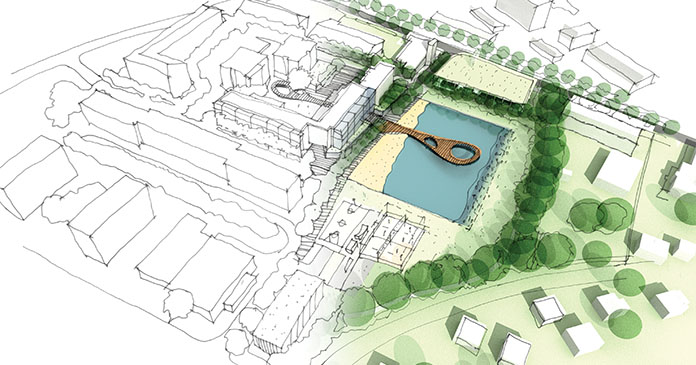The home has always been important, but it’s safe to say that this year, the significance of the home is greatly increased. A residence is now everything—a home office, a home gym, a safe sanctuary for relaxation and leisure time and maybe even your children’s classroom.
Due to the COVID-19 pandemic, virtually every aspect of a person’s life now takes place at home. Regardless of whether this cultural shift is temporary, it will likely bring new trends in multifamily layouts and amenities.
For example, a survey conducted in March of this year found that 56 percent of Americans were looking to move during the crisis. I suspect that this is largely because Americans are looking for more square footage to make for a more comfortable and versatile living space.
As a result, carefully designed layouts to provide somewhat segregated space for different activities will be key in new communities. Architects will aim to make smarter use out of square footage. For example, a one-bedroom apartment in the 700-sq.-ft. range can easily include various smart spaces for eating, storing food, laundry—even a fitness area within a dining room, provided the kitchen area has a bar where barstools can be used for eating.
Coworking spaces within apartment communities may become a stronger selling point. A newer amenity that has risen in popularity over the last two years: apartment residents are increasingly interested in renting onsite workspaces that aren’t attached to individual units.
In a post-pandemic world, we can predict that the need for a “third working space” will continue to rise as workers likely will go back to the office, but not necessarily for a full 40-hour week.
Other consumer trends include more time spent in the kitchen. A survey by Self found one-third of people are experimenting with cooking, and 1 in 4 are spending 133 percent extra on groceries each month. This could place more significance on having nicer kitchen amenities.
The layout of the pantry becomes more significant as people find importance in storing non-perishable foods, veggies and other items. Additional cabinetry becomes a factor for those who have invested in additional kitchen gadgets and cooking tools.
If completely overhauling apartment layouts or cabinet space isn’t an option, there are other measures that property managers and operators can take immediately.
We have installed touchless soap dispensers at several of our properties, for instance. Located in the kitchen and bathroom areas, these lower-cost amenities show future resident that we are adaptable in meeting changing needs to ensure the health and safety of our residents.
In another shift in consumer behavior, online sales grew 76 percent in June 2020. Despite a slight decline as stores began to reopen, the importance of being able to buy luxury goods online will continue long after the pandemic is over.
Specifically, for multifamily real estate, with an increase in online shopping comes an increased demand for mailroom management software.
Residents want to be able to get their packages securely, whether that means packages are placed on doorsteps or managed through trusted locker apps.
Takeout orders for contactless food delivery are becoming more important, as well. If a building is secure, apps are necessary to let food runners inside. Extra security is essential—it should provide property management with an audit trail of all visitors while allowing residents the flexibility to allow building entry without having to leave their individual units.
In the current pandemic environment, some apartment communities are requiring reservations for pool time. Pool reservations likely won’t last, but consideration for a variety of outdoor amenities could become more important in the future.
Property management companies with enough land will want to consider building new amenities, like resident tennis courts, which can be utilized while players practice social distancing.
Minor amenity changes are one of the largest changing factors among multifamily rentals this year. For example, communities across the country repeatedly had to close coffee stations. After the pandemic has passed, one might argue that Americans will be more germ-conscious and the desire for a community coffee bar might be lower.
Rather than a community Starbucks espresso machine, some communities might switch to individual cold brew cans in a neatly stocked fridge, or the budget for a coffee bar might be filtered into another aspect of the apartment community.
Overall, multifamily amenities and layouts are evolving. This year’s pandemic accelerated the need for various technologies and services, which were already years in the making. Future multifamily consumers will expect a wider array of amenities and layouts that support work-from-home arrangements and other activities for health and well-being. These changes are evident as a new focus on living spaces will likely be heightened for years to come as we progress into a post-pandemic world.
Except Kellie Rastegar, Rastegar Property Group












